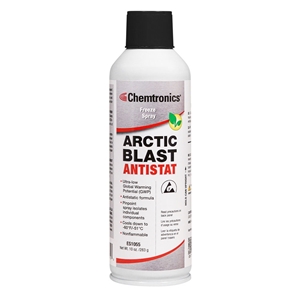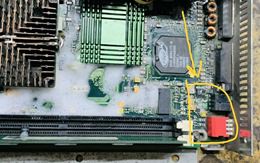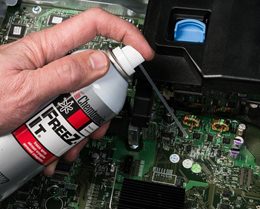
Your Sample Request
Arctic Blast Antistat Freeze Spray
*=required field
TDS
REGS
SDS
Arctic Blast Antistat Freeze Spray
Ultra-low GWP antistatic freeze spray with pin-point accuracy
Arctic Blast™ Antistat Freeze Spray is engineered for locating thermal intermittent electrical components or cooling printed circuit boards with minimal static generation. It is formulated with HFO-1234ze, a new material that has a significantly lower global warming potential (GWP) than previously used materials. Arctic Blast™ Antistat is nonflammable*, residue-free and provides fast cooling action.
Features & Benefits
- Pinpoint spray that isolates individual components without freezing surrounding areas
- Antistatic formulation ideal for use on static sensitive components
- Non-frosting
- Rapidly cools components to -49 °F/-45 °C
- Filtered to 0.2 microns - Ultra high purity
- Low GWP of <1 - Low global warming impact when compared to typical freeze sprays
- Plastic Safe - Will not harm plastics when liquid is sprayed onto circuits
- Nonflammable* - Safe to be used around electronics
- Low Toxicity - Safe to be used in a well ventilated area
- Filtered to 0.2 microns - Ultra high purity, cleanest spray
- Short Atmospheric lifetime - Material will break down and be eliminated from the atmosphere quickly
* under ambient conditions
Applications
- Cool Equipment for Testing
- Dissipate Heat While Soldering or Desoldering
- Isolate Thermal Intermittent Components
- Test Circuit Traces for Continuity and Stress Fractures
- Track Static Sensitive Components



